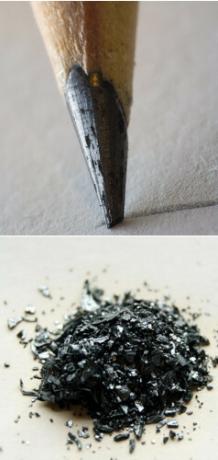The chemical elements in the Periodic Table can be classified into three main groups: metals, non-metals and semi-metals. Metals are the vast majority of elements, as you can see in the text Metals.
Nonmetals or nonmetals are the eleven chemical elements shown above, ie carbon, nitrogen, phosphorus, oxygen, sulfur, selenium, fluorine, chlorine, bromine, iodine and astatine.
Hydrogen is often also listed in this group. It appears in family 1 of the periodic table because it has only one electron in its electron shell, as do the other elements in that family (alkaline earth metals). However, the characteristics and chemical properties of hydrogen are totally different from those of alkaline earth metals.
Other classifications do not consider hydrogen as a non-metal, but as an atypical element that is classified separately as it has the ability to bind metals, non-metals and semi-metals.
These two types of classifications (with or without the inclusion of hydrogen among non-metals) are possible because the International Union of Pure Chemistry and Applied (IUPAC) recommends that chemical elements be classified as metals, non-metals and semi-metals, without, however, defining or indicating what it is which.
The main chemical property of ametals is that they have a tendency to gain electrons and form anions (negatively charged species). This means that they are dischargedelectronegativity or, better said, high tendency to attract electrons. We say that the more electronegative a metal is, the more reactive it will be. For more details on this reactivity of non-metals and how it influences the chemical reactions in which they participate, read the text Reactivity of non-metals.
Now let's look at the main physical properties of non-metals, which are completely opposite to those of metals:
- They are not good heat conductors: are thermal insulators;
- They are not good conductors of electricity: The only exception is carbon, which, in the form of graphite, conducts electricity well;
- They are opaque: That means they don't have the metallic sheen. Graphite and iodine are two exceptions.

Graphite and iodine are non-metals that, in the solid state, have a "metallic" shine
- They are easily fragmented, that is, they are shattered, they are brittle: This means that they cannot be molded into wires (they do not have the property of ductility) or sheets (they are not malleable) as is done with metals;
- They can be presented in the three states of aggregation: solid (carbon, phosphorus, sulfur, selenium and astatine), liquid (bromine) and gaseous (nitrogen, oxygen, fluorine, chlorine and iodine - despite being found in the solid state under ambient conditions, iodine is perceptibly volatile and sublime, that is, it passes directly from the solid state to the state. gaseous).
Some semi-metals can be classified as non-metals. Read more about it in the text. Semi metals.
By Jennifer Fogaça
Graduated in Chemistry
